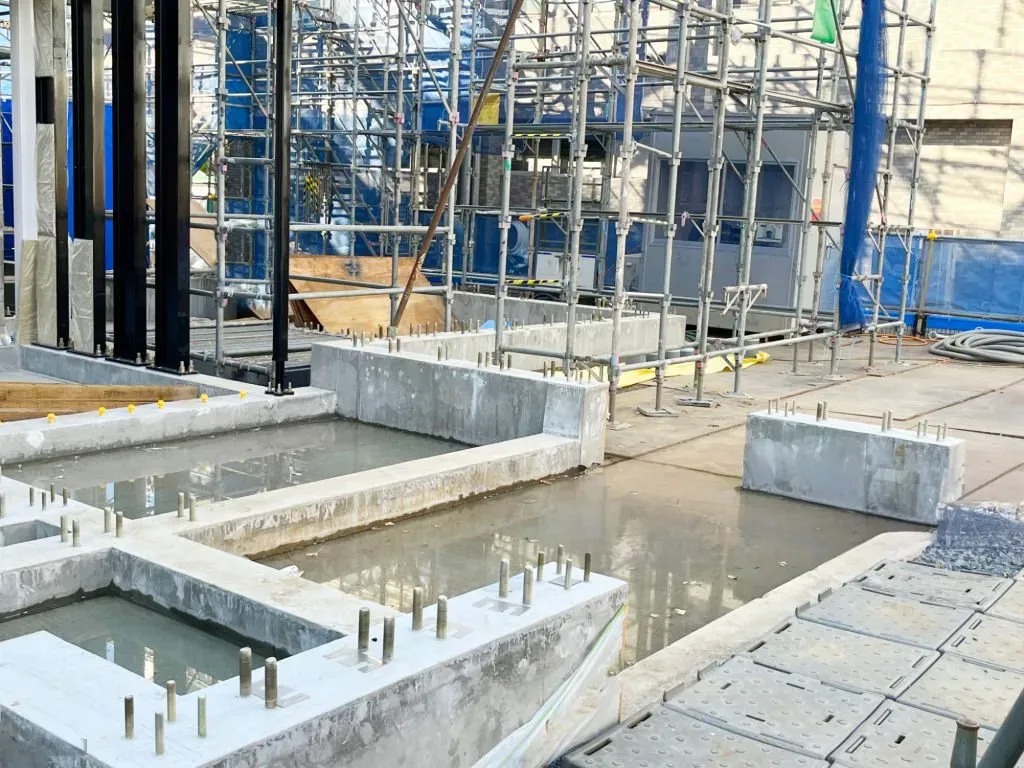Introduction
When it comes to underwater construction, the challenges are significant. Structures built underwater must withstand immense pressure, constant exposure to water, and various environmental factors like temperature changes and chemical reactions. A crucial aspect of such projects is the selection of fasteners and anchoring solutions that are durable, reliable, and corrosion-resistant. Chemical bolts have emerged as the ideal choice for anchoring in underwater environments due to their superior performance, durability, and adaptability.
What Are Chemical Bolts?
Chemical bolts, also known as chemical anchors or resin anchors, are fasteners that rely on a chemical bonding agent (typically epoxy, polyester, or vinylester) to create a strong bond between the anchor and the substrate, such as concrete or rock. Unlike mechanical anchors, which rely on expansion forces, chemical bolts secure the anchor through the adhesive properties of the resin, creating a solid and reliable connection.
Why Chemical Bolts Are Ideal for Underwater Construction
- Superior Bond StrengthOne of the most critical factors in underwater construction is ensuring that the anchor remains secure, even under challenging conditions. Chemical bolts provide superior bond strength due to the chemical reaction between the resin and the substrate material. This bond is often stronger than the base material itself, making it ideal for high-load applications such as bridge piers, offshore structures, and underwater pipelines.
- Corrosion ResistanceUnderwater environments are prone to corrosion, especially when the construction takes place in saltwater. Mechanical anchors, particularly those made from metal, are susceptible to rust and deterioration over time. Chemical bolts, on the other hand, are highly resistant to corrosion when combined with stainless steel or galvanized components, making them the perfect choice for long-term underwater applications.
- Waterproof AdhesivesThe resins used in chemical bolts are waterproof and designed to cure even in submerged conditions. This ensures that the anchor remains strong and durable, regardless of water exposure. These adhesives are specially formulated to work in moist environments, and many can even be applied underwater, without losing their bonding strength.
- Vibration and Load ResistanceUnderwater structures are often subjected to significant vibrations and dynamic loads from water currents, tides, and operational forces. Chemical bolts excel in these conditions because they distribute load evenly across the bond area, unlike mechanical anchors that concentrate stress at specific points. This makes chemical bolts more reliable in handling both static and dynamic forces underwater.
- Minimal Stress on SubstratesIn contrast to mechanical anchors, which exert expansion forces on the substrate material, chemical bolts apply minimal stress. This is especially important in underwater construction, where the substrate (often concrete or rock) may already be weakened by water exposure. Chemical bolts preserve the integrity of the substrate while providing a secure and long-lasting anchoring solution.
- Flexibility in ApplicationChemical bolts can be used in a variety of underwater applications, including:
- Bridge piers and foundations
- Dams and weirs
- Marine docks and harbors
- Offshore oil platforms
- Subsea pipelines and cables
- Aquatic theme park installations
- Temperature ResistanceUnderwater environments can experience significant temperature fluctuations, particularly in deep-sea construction. Chemical bolts offer excellent temperature resistance, maintaining their integrity and bond strength in both high and low temperatures. Some chemical adhesives are designed to withstand extreme temperatures, ensuring reliable performance in diverse underwater conditions.
Installation Process of Chemical Bolts in Underwater Construction
The installation process for chemical bolts underwater is straightforward but requires specific equipment and expertise:
- Drilling the Hole: A hole is drilled into the substrate using SDS MAX or SDS PLUS masonry drill bits to the required depth and diameter.
- Cleaning the Hole: A blow-out pump or heavy-duty nylon-steel hole brush is used to remove debris and ensure a clean surface for the resin to bond with. Cleanliness is crucial for achieving the highest bond strength.
- Applying the Resin: The chemical adhesive (such as epoxy) is injected into the hole using specialized equipment. Care must be taken to ensure that the hole is completely filled with resin.
- Inserting the Anchor Rod: The anchor rod is then inserted into the hole, with a slight twisting motion to ensure even distribution of the resin around the rod. For underwater applications, anchor rods made from corrosion-resistant materials, such as stainless steel or hot-dip galvanized iron, are recommended.
- Curing: The resin cures to form a solid bond. Depending on the product used, the curing process can take anywhere from a few minutes to several hours, and some resins are formulated to cure underwater without the need for dewatering.
- Final Inspection: Once the resin has fully cured, the installation is inspected to ensure proper bond strength and positioning.
Conclusion
In underwater construction, where structural integrity and resistance to environmental factors are paramount, chemical bolts provide the ideal anchoring solution. Their high bond strength, resistance to corrosion, ability to cure in submerged conditions, and flexibility make them indispensable for engineers and contractors working on marine and offshore projects. By offering superior durability and performance, chemical bolts ensure the longevity and stability of underwater structures, even in the harshest environments.

